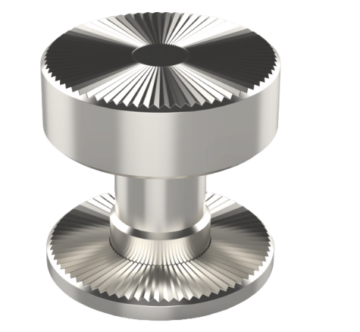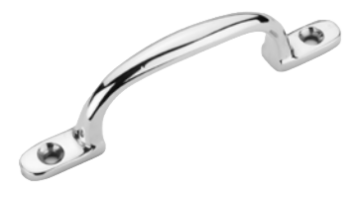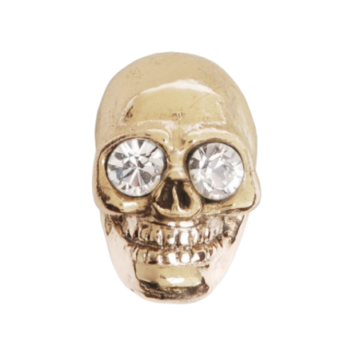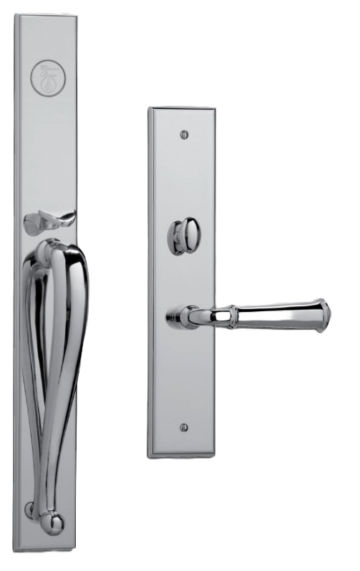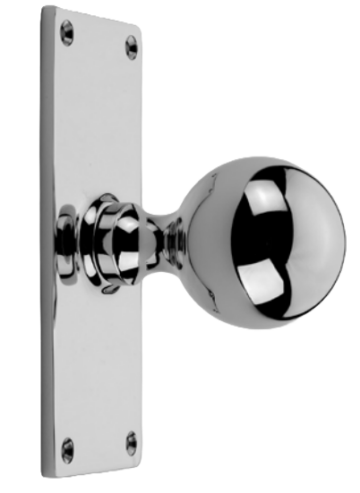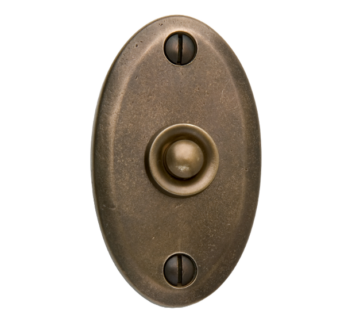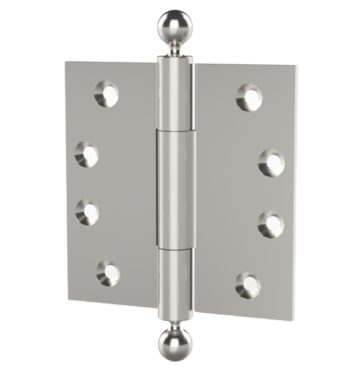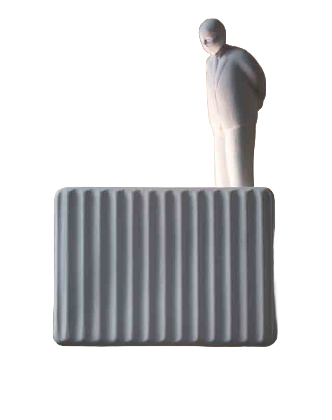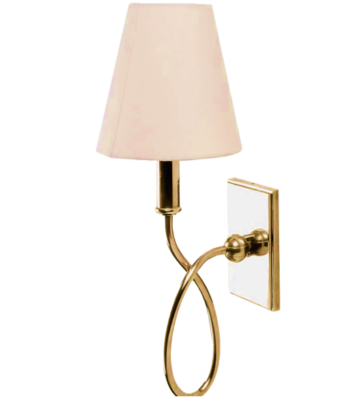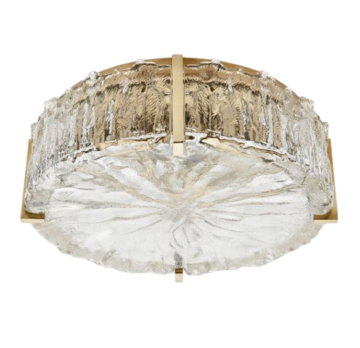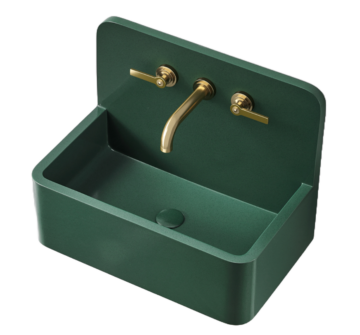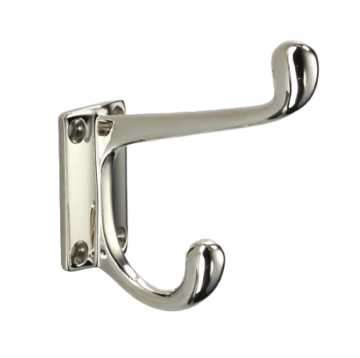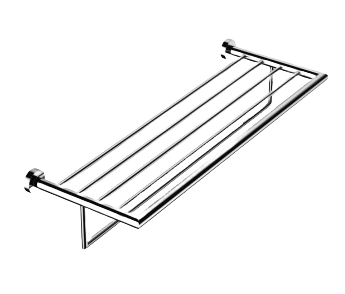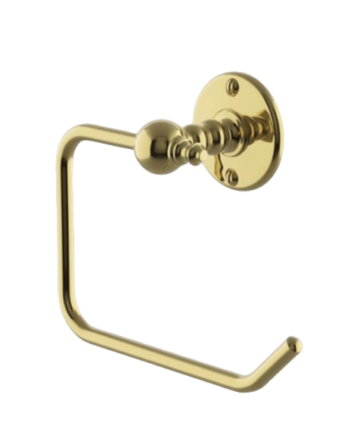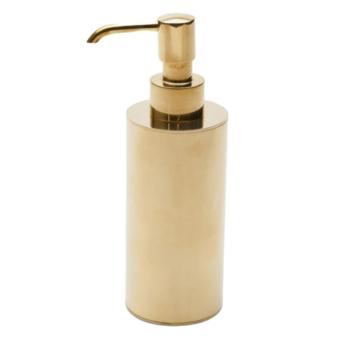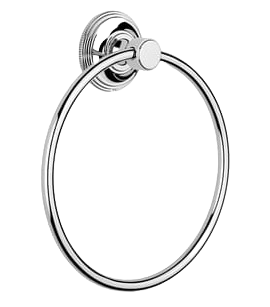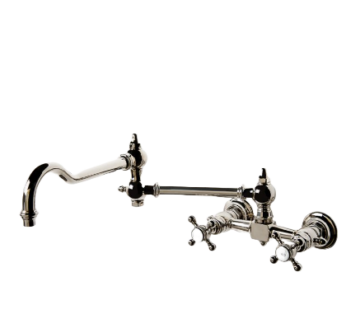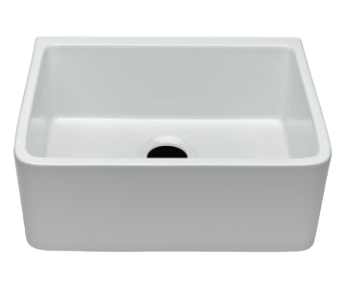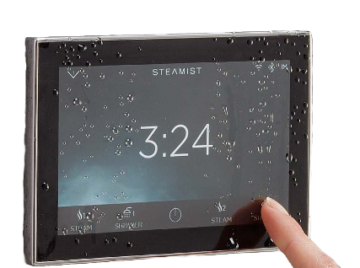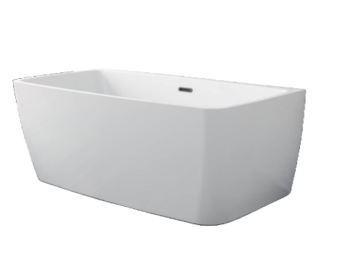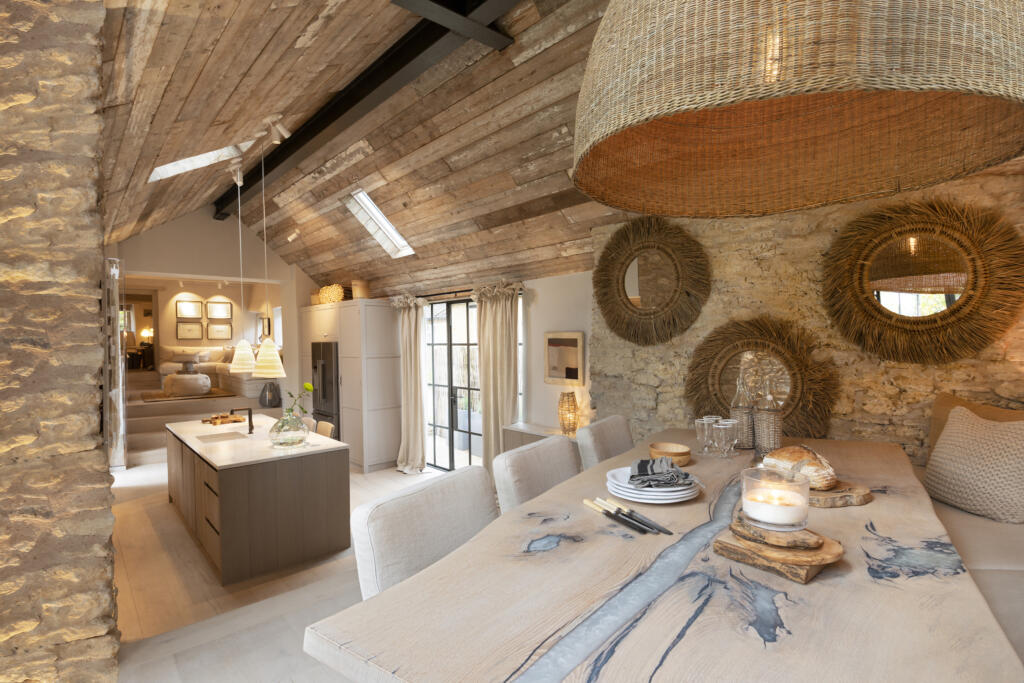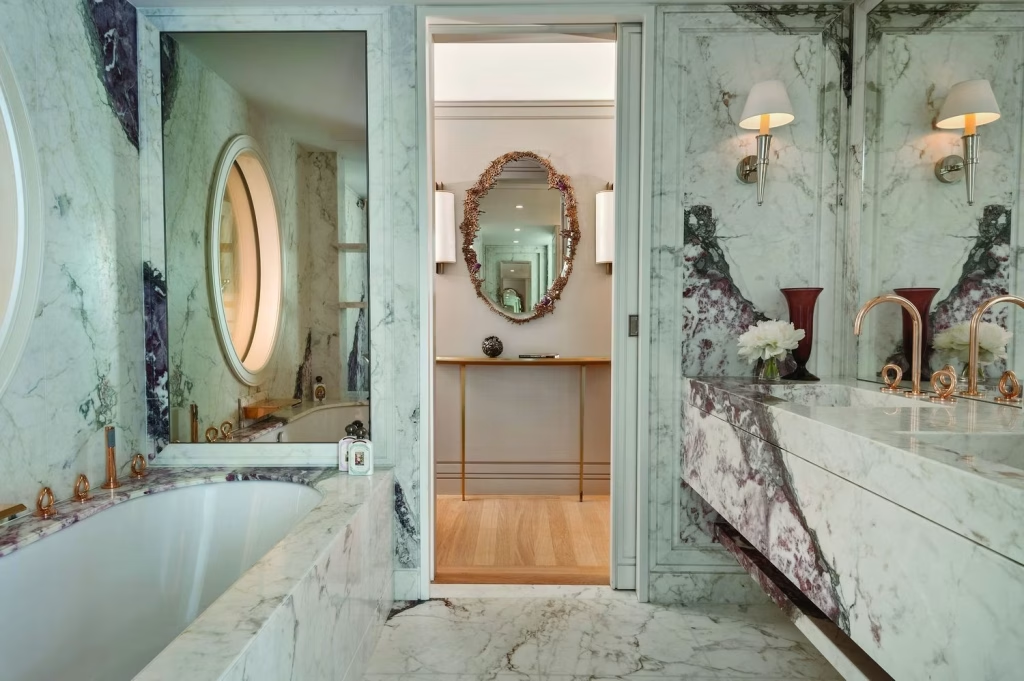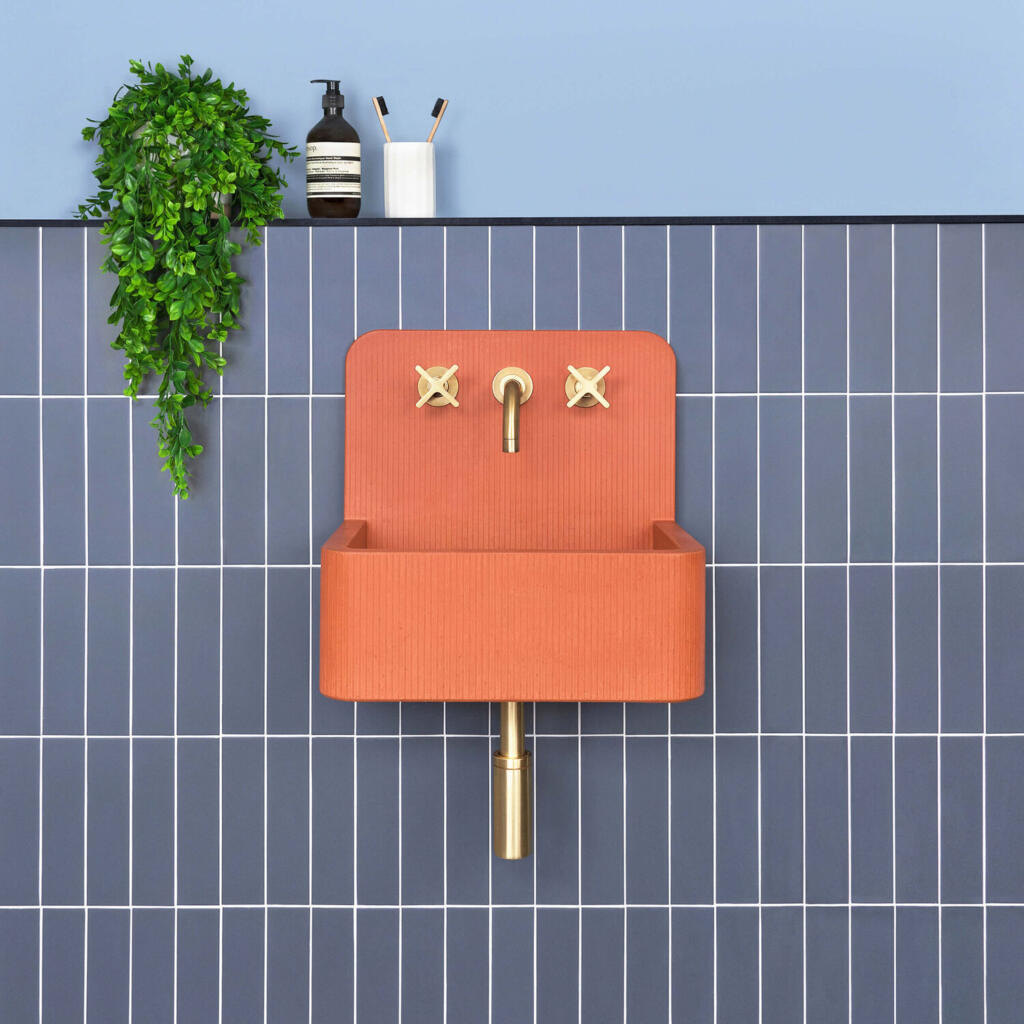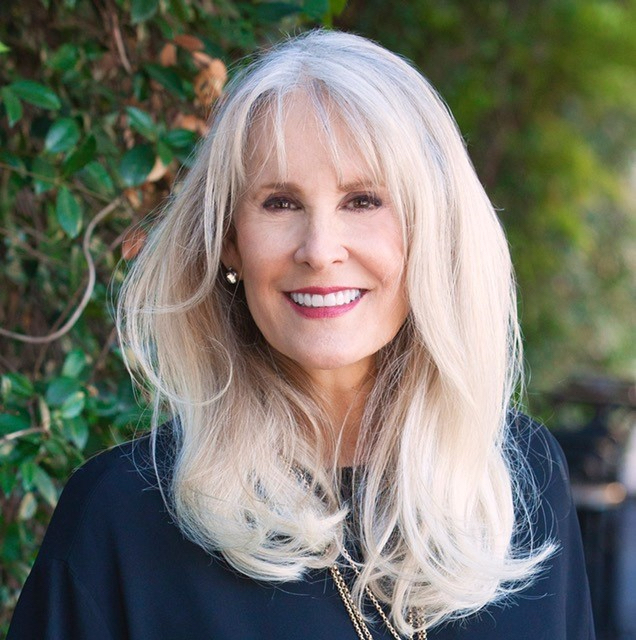
Collaboration has long been a top priority for Fern Santini, an Austin design icon whose distinct work has been spotlighted by Architectural Digest, Luxe, Milieu, House Beautiful and Objekt International, among other publications. Known for ground-up projects, Santini works closely with clients and architects to create highly personalized spaces that fuse unexpected styles and even defy categorization. Building on nearly three decades of design experience, Santini opened her latest chapter by establishing Fern Santini Collaborative — an endeavor that unites architects, builders and landscape architects in the creation of fully furnished and decorated homes that benefit area nonprofits through fundraising events.
Bringing together the talents of Santini, Paul Lamb Architects, Escobedo Group, Shademaker Studio and more than a dozen project partners (Alexander Marchant among them), the collaborative’s highly anticipated flagship project 3705 Meadowbank is set for a big reveal in March with a series of events benefiting the Health Alliance for Austin Musicians (HAAM). We caught up with Santini via Zoom to quiz her about all things Meadowbank — a “house with an attitude” befitting its prime location in the Live Music Capital of the World.
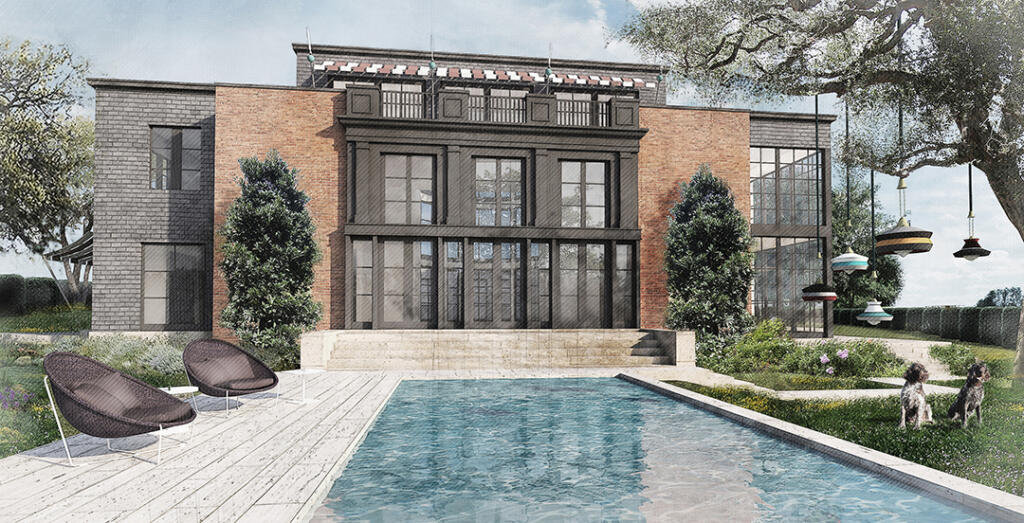
What can you tell us about where the project is, when you’ll be wrapping it up and what we can expect from the opening events?
We actually have dates! I’ve only been asking for a damn schedule for a year and a half, and I finally got one — after I scared the hooey out of them about all these events that are planned. There are big people involved that have schedules. So I think we’re all finally on the same page.
There’s about an army over there. There are people swarming all over the site, inside and out. It’s exciting to see, it’s really taking shape. They will be finished on March 1. My install starts March 2 and goes through the 10th. Douglas Friedman, who is the hottest architectural photographer on the planet, is coming in from either Marfa or New York on the 11th and 12th. This is a different kind of a business model … [so] we’re going to pay for [the project partners] to have great photographs of their contributions. So the house will get shot like it would for a magazine. It may or may not get submitted down the road, but that was not the intent. It’s more an intent to document what we’ve done for the collaborative and for all of our project partners … So there’s going to be a deliberate intent made with Douglas to take some extra time to shoot certain things for our project partners.
We hope this is the inaugural project that’s one of many — unless I lose my ass, which is possible [laughs]. I believe in it so much that I think there’s a demand for this. I’ve had 11 clients now sell their houses fully furnished. Some people love the process, some people don’t like the process, some people don’t want to spend four years on the process — finding a lot, putting a team together, making three million decisions. So, we did it for them. This is a different model from a normal spec. It is a spec for sale and we’re not showing it — so that’s even weirder. The real estate community does not know what to think.
But so much of the value is in the house. I mean, the vintage barware, I’ve spent two years accumulating. And the rock-and-roll photographs that are up in the bar, that is a huge collection. The last two I bought are Baron Wolman, who just died. He was the preeminent Woodstock photographer and shot everybody of that era. There are big photographs up there [by] big photographers and I have their books up there [too]. It’s a house with an attitude — it’s not vanilla. It’s not trying to hit the broad mainstream, it’s trying to hit a target audience that’s sophisticated, loves music [and] loves Austin. It has a sense of place, it’s quirky, it’s cheeky. It’s the best of things that I love about Austin — that quirkiness.
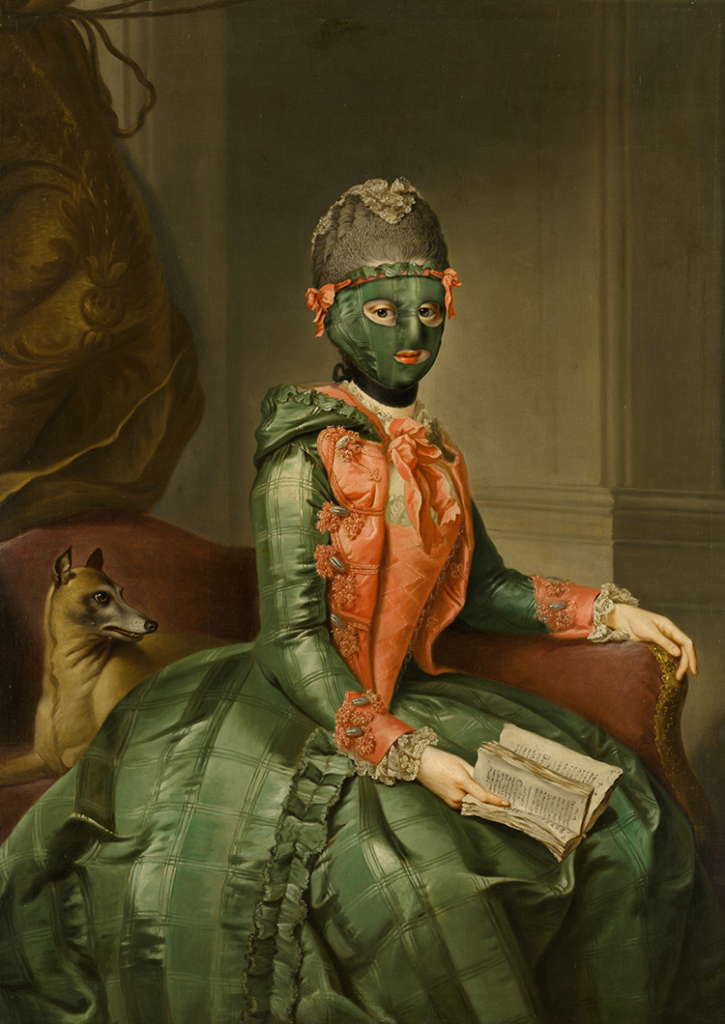
I was telling somebody a story the other day [about] a photograph upstairs. It was taken in 1970, which is the first year the Armadillo World Headquarters opened. That’s where it all started. And it was just fly by the seat of your pants. There was never a place like that, where Frank Zappa shows up a day early to work the concession stand — just for the hell of it [laughs]. Eddie Wilson asked him later if anyone recognized him and he said, “I don’t think so, but I think I sold nachos to Bob Dylan.” That attitude is still here in Austin — that celebration of diversity of all kinds. As big as we get, as long as we hold onto that, I think we’ll still attract young, creative people to this town. It doesn’t exist anywhere else in Texas, I don’t think. So we’re trying to celebrate that.
We’ve asked several of my favorite Austin artists, plus there’s actually art in here from all over the world. There’s a crazy piece from Volker Hermes in the entry. [That] guy has so much swagger, it’s crazy. He’s a young guy out of Düsseldorf. He has this series called Hidden Portraits, where he takes these baroque paintings and takes an element that’s already in the painting and uses it in a way that covers part of the face. It’s hysterical.
So the business model for the collaborative is really three things: to put something out there that has integrity, that’s built the way we build a house for a client. We’re not trying to cut corners, cover things up and maximize profit. Obviously, it’s a business, we want to make money. But we gambled that people will be willing to pay for positive energy, to engineer the HVAC system, because we all want to breathe clean air. We gambled on expensive windows, expensive steel in the structure, we did it right. So it was an attempt to put something out there that has long legs — built well and designed by an award-winning architect.
The second part is to promote our project partners and hopefully change the dialog about the way that we do business. In my industry, we hide everyone that does work for us. And nobody wants to give away their resources. Nobody wants to tell anyone who they went to that makes them look good. I just want to turn that upside down. I hope that people will realize that there’s good karma in having the generosity of spirit. We all do better when we all do better … So that’s a big part of the message. And I have gotten huge resistance to that from the design community. I’ve been shocked … It doesn’t take much for you to just plug somebody on Instagram, you know?
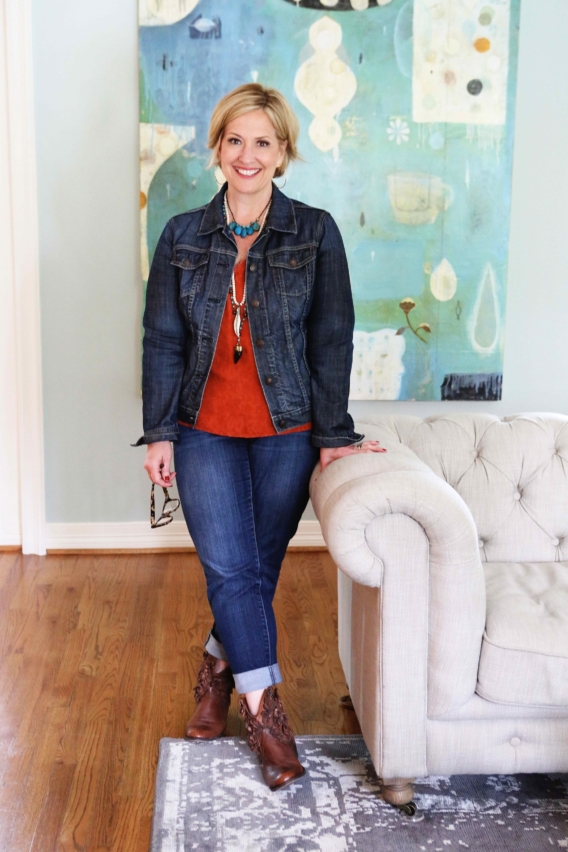
The third part is, I don’t ever want to do another gala where the nonprofit gets 10% of the proceeds at the end of the day. So we’re trying to use each house as a vehicle to hold events [that] raise money for a nonprofit that’s picked at the beginning of the project. This one’s HAAM, which is near and dear to my heart. If we ever needed money for HAAM, it’s right now. It’s the Health Alliance for Austin Musicians, and they’ve been here in Austin for 15 years. Robin Shivers started it. And it’s the only way most [local] working musicians have any access to health insurance. So HAAM’s going to sell all the tickets to these events. We don’t touch the money — they keep 100% of it. Our job is to figure out how to pay for it, and who can help us by being generous and not charging us — such as Brené Brown. She’s a client and she epitomizes generosity of spirit. And she is a music nut just like me. She’s doing a talk the last night for 50 people — outside — and the tickets are $2,500 apiece. HAAM’s going to sell those — [but] I could sell all 50 of those right now. We’re buying tickets! If we show up, we have to buy tickets. And there are four events and the first one is March 23rd. The Austin Luxury Network will have the realtors through and we’re going to charge a nominal admission — $25 or $30 — and all that money goes to HAAM.
But you’re not listing the house with a realtor?
We’re not. I know too many realtors. I would get in so much trouble. I don’t have the money in my budget for that commission. I have money in my budget for a title policy and a 3% realtor commission for whoever sells it. So my message to them was, here’s a product you’re asking for. You don’t have to spend a dime advertising it. You don’t have to spend any time promoting it. Just show up with a buyer and you get your 3%. I’ve talked to so many of them and they all seem to be fine with that. They get it.
So [the Austin Luxury Network event] is an opportunity for everyone to see the house. But it’s also an opportunity for the real estate community to see what we hope to do again and again. The second event is the design event that The Urban Electric Company from Charleston, South Carolina, is hosting. Dave Dawson, who owns that company, is coming down for it. They have seven warehouses and 260 employees and he knows every single person’s name. I walked through that whole facility with him last year. They make the most beautiful lights that they sell all over the world. They’re designed by high-end designers and architects, it’s a family-owned business and I promote his vision, his product, his mission and his philosophy. He’s an amazing guy.
This is the event that will help the project partners the most. It’s where everyone gets maximum visibility to a target audience of architects and designers from across the state. Invitations are going out [and] everyone will have to do the same thing — book time and pay a small admission fee that goes to HAAM. This is the way that everyone can see, for instance, that I hung two custom pendants from Marie Christophe in Paris in the master bath with Dave’s sconces … It’s all about the mix that’s in there.
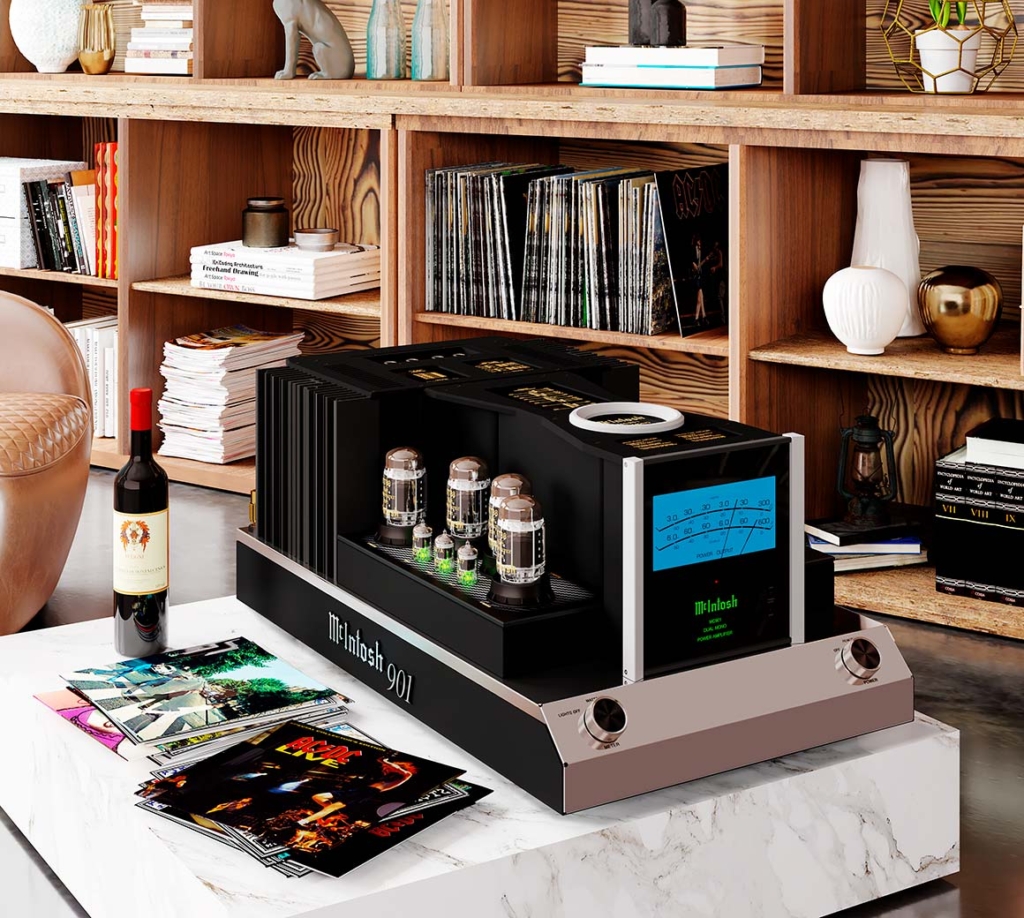
So the project partners will be there, the press will be there and the artists will be there, people that have art in the house — Karen Hawkins, Lance Letscher. Francine Turk is coming in from Chicago. She’s doing a yearlong project with Bob Dylan right now and she’s doing a piece for the entry. She’s very music-centric and a badass girl from Chicago who’s going to do a custom piece for Meadowbank and then do prints off of it. She hand-finishes all the prints and a portion of every print she sells will go to HAAM. So that’s a big day for all of the project partners. Hopefully everybody gets business off of it, that’s the idea.
The next evening is the McIntosh DJ Dinner Party, which is [inspired by] Tokyo Record Bar’s model. Before COVID, we had talked to them about [coming to Austin] … but I don’t think that’s feasible anymore. Their business model is they sell vinyl upstairs and serve dinner downstairs. And apparently they have the playlist to beat all. It’s from the ’50s to now. So 70 years worth of music — everybody gets to pick songs and everybody gets a copy of it. Everyone sits there all night going, “Whose song is this?” It’s so much fun. We forgot how to be interactive with our music — we gave it up for convenience. And I love the idea of people having a dinner party like that.
The whole house is based on something that’s part hip and part historic. McIntosh fits that bill. There’s nothing like it. It’s still made in Binghamton, New York. It’s the equipment Willie Nelson had — his old McIntosh equipment is now in the bar at the W [Hotel in Austin]. It’s the equipment Jimmy Page has. It’s been the grandaddy forever. They still make vacuum tubes. We never duplicated that sound. It sounds like Bob’s right in front of you. But now, you can do something you couldn’t do with Willie’s old equipment. You can play vinyl and it’s analog, so it goes through the vacuum tubes, and it goes all over the house. Or you can stream to it. It converts the digital signal to analog and runs it through the vacuum tubes. So we’re going backwards [laughs]. And it’s beautiful. All my A/V equipment, I’ve hidden forever, it’s still in the closet. But not the McIntosh stuff. It is jewelry … and it’s front and center in this house. I want people to see it — I want people to see that it’s sexy and hip. And you can have it in the big fat middle of your life.
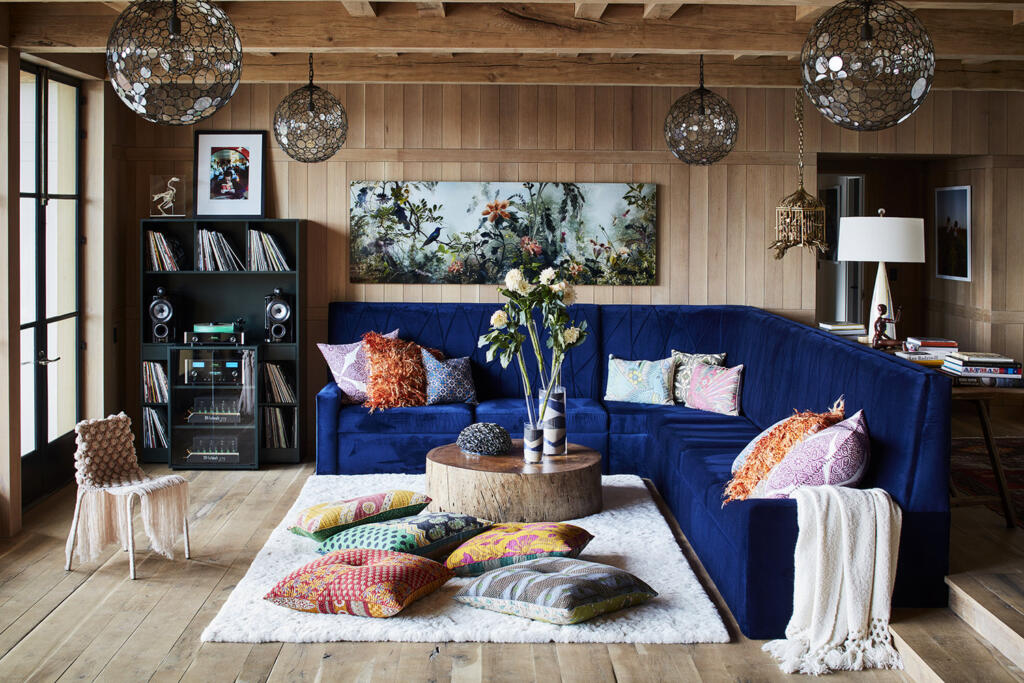
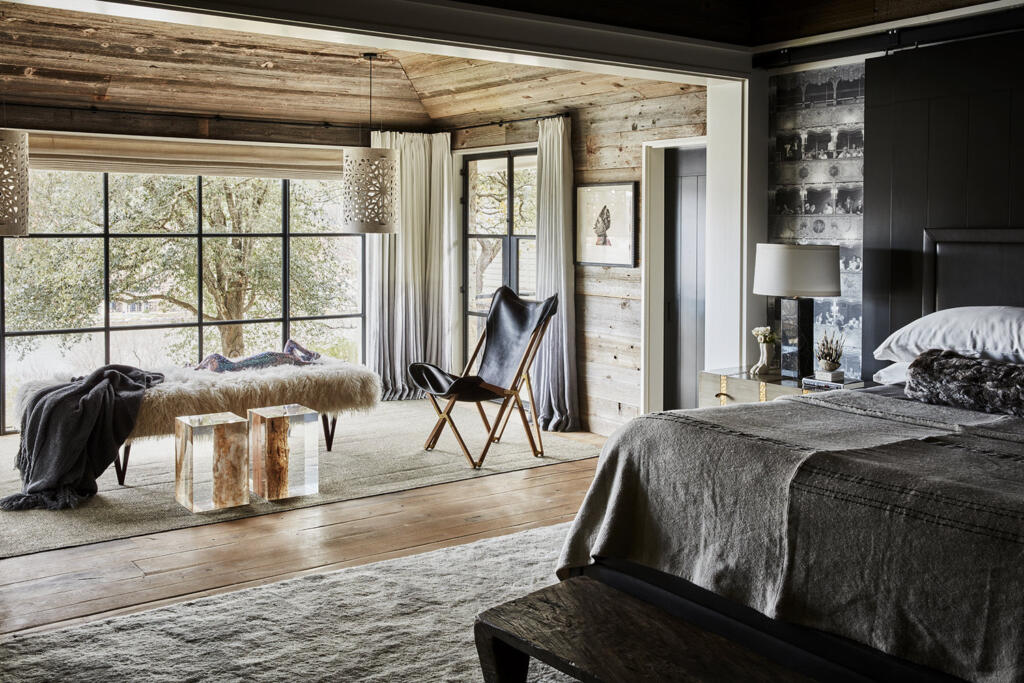
It sounds challenging to design a home without knowing who’s going to live there. But it seems like you just went on intuition and used music as a unifying concept. Is that fair to say?
That’s totally fair to say. And I [also] went on [previous projects]. We did a house for Jensen and Danneel Ackles a few years ago that was in Architectural Digest. And we did a fabulous, really arty, edgy house in Boulder, that was on the cover of Luxe Colorado. [The] Ackles house sold quickly and it sold furnished. I know there’s a demand for that … This house has an attitude and a sense of humor. I’m betting that somebody’s going to get it — that they’ll understand it. There’s not a house in Austin like it. So many people move to Austin … And everyone brags about the music scene … This is a way to educate people … It’s fun to live with music in your life and not go into the media room. To maybe show people how it can be interactive. I grew up with vinyl. And then it went away. It was convenient … but we gave up part of the sound. And we gave up part of our own visceral connection to it — and the interaction [of] people coming over for dinner and bringing an album. A lot of people nowadays have never had that experience. So this being the Live Music Capital of the World, and people coming into Austin for that, with HAAM as the benefactor of these events, it all kind of came full circle. I think people will embrace it if they know about it.
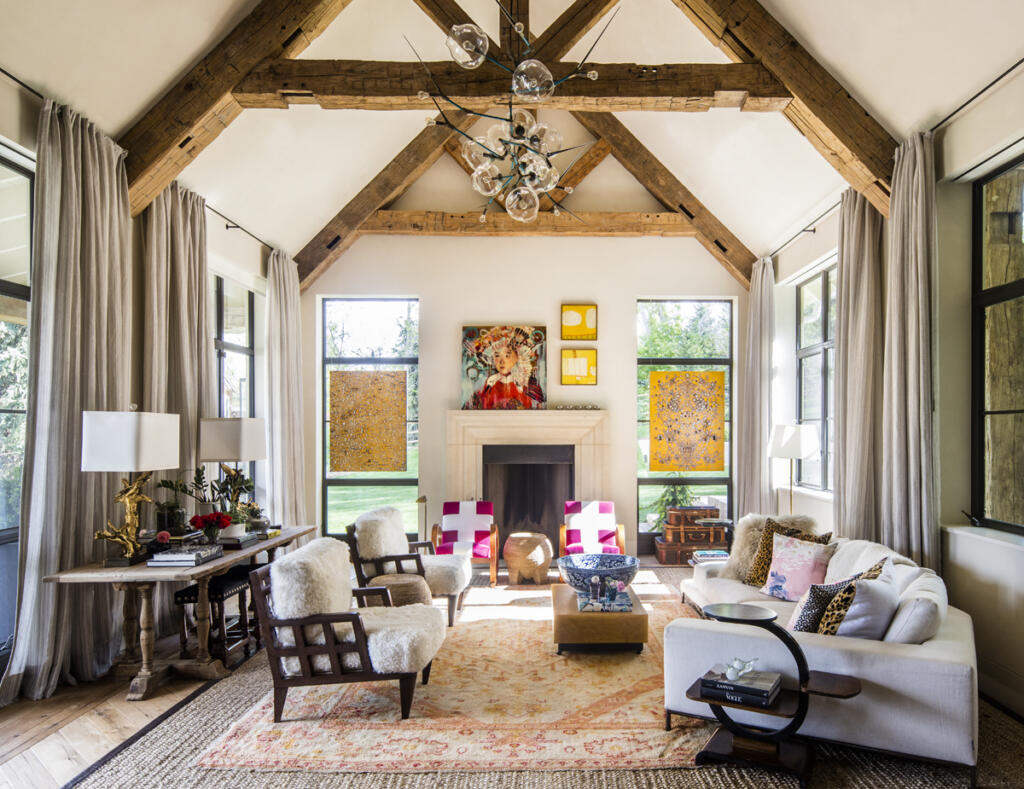
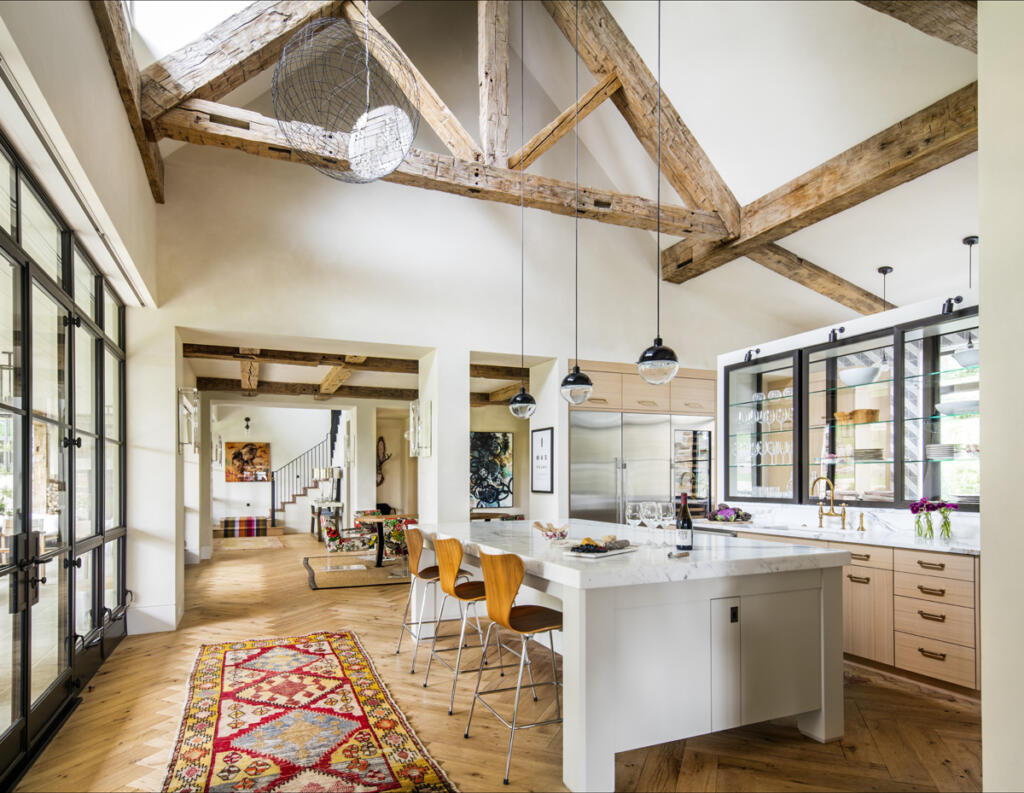
Did the site itself influence your design process?
Definitely. [It’s] the corner lot, or the peninsula lot, it’s all a curve, all the way around. There’s really no backyard. So we knew that all the great real estate was in the front. But we wanted all of those big doors to open up to an entertaining area, so the front door actually moved to the side. And we just developed it from there. From the beginning, we knew that would be where the pool would be. There’s a bocce ball court on the side and a small putting green. The front is all terraced landscaping, the lawn and the pool. There are tent pole [housings] buried in the lawn so that you can easily erect a tent. It was set up for entertaining.
From what I gather, Fern Santini Collaborative will be an evolving team?
Yes, different builders, different architects, different landscape architects.
So you’ve got a mental list of folks you might want to work with?
Definitely — I’m already thinking about number two. And we may do some things that are smaller scale. These one-offs take time. This has been [in the works for] two years. Hopefully it won’t take that long next time. We might do some smaller things that we can do with a shorter turnaround … It’s been a learning experience — even after almost 30 years of doing this.
